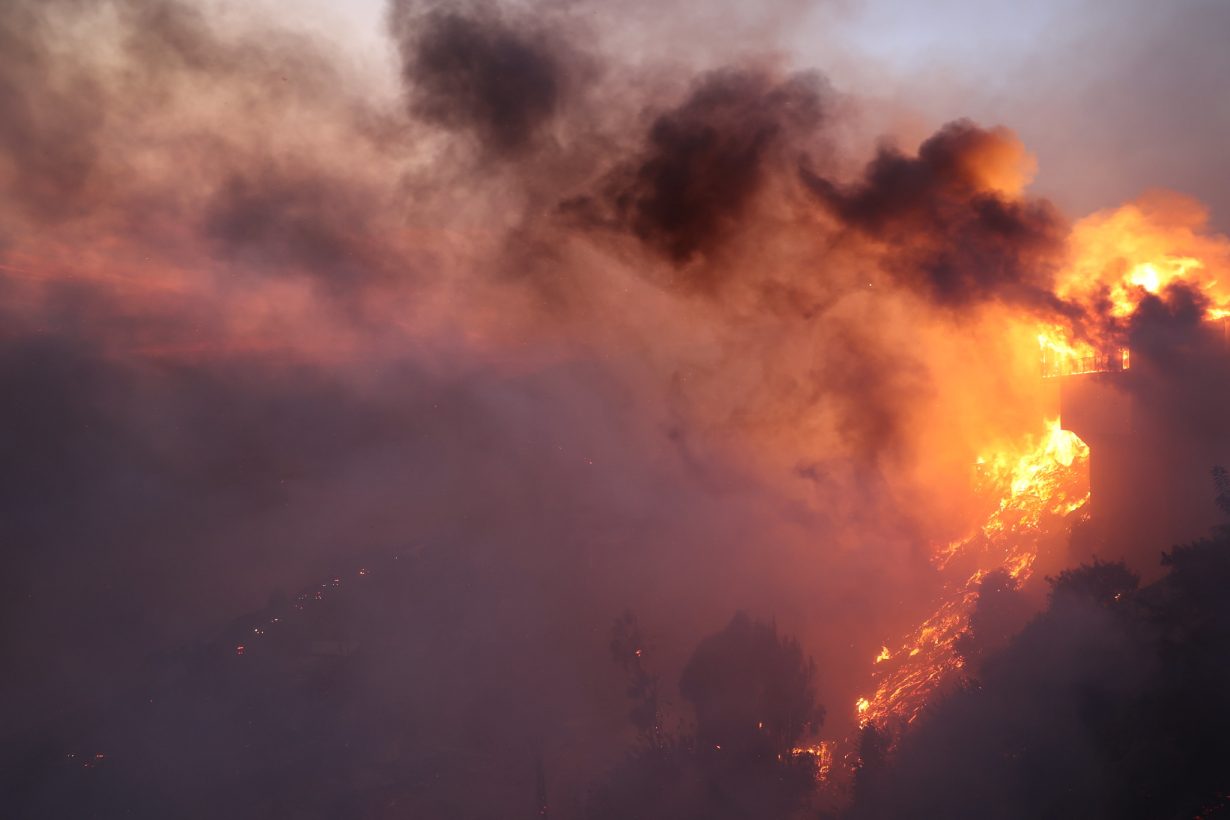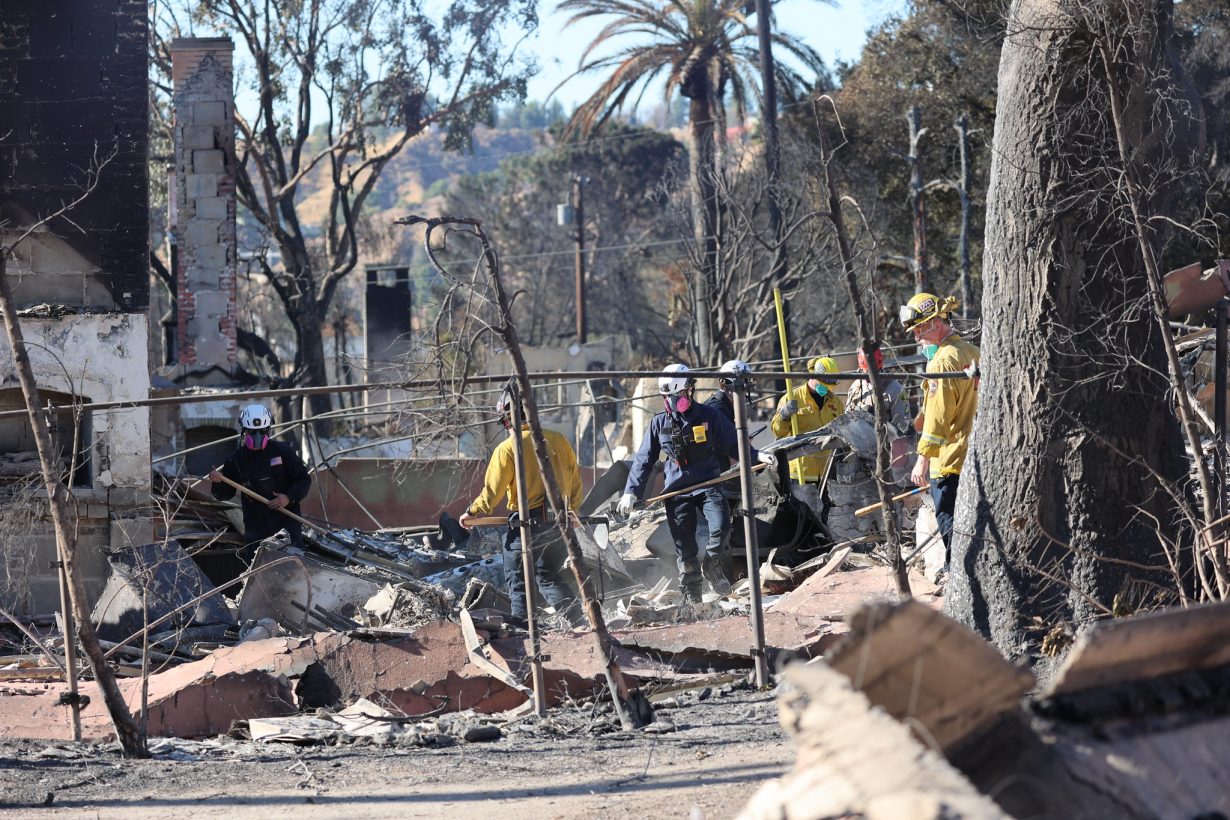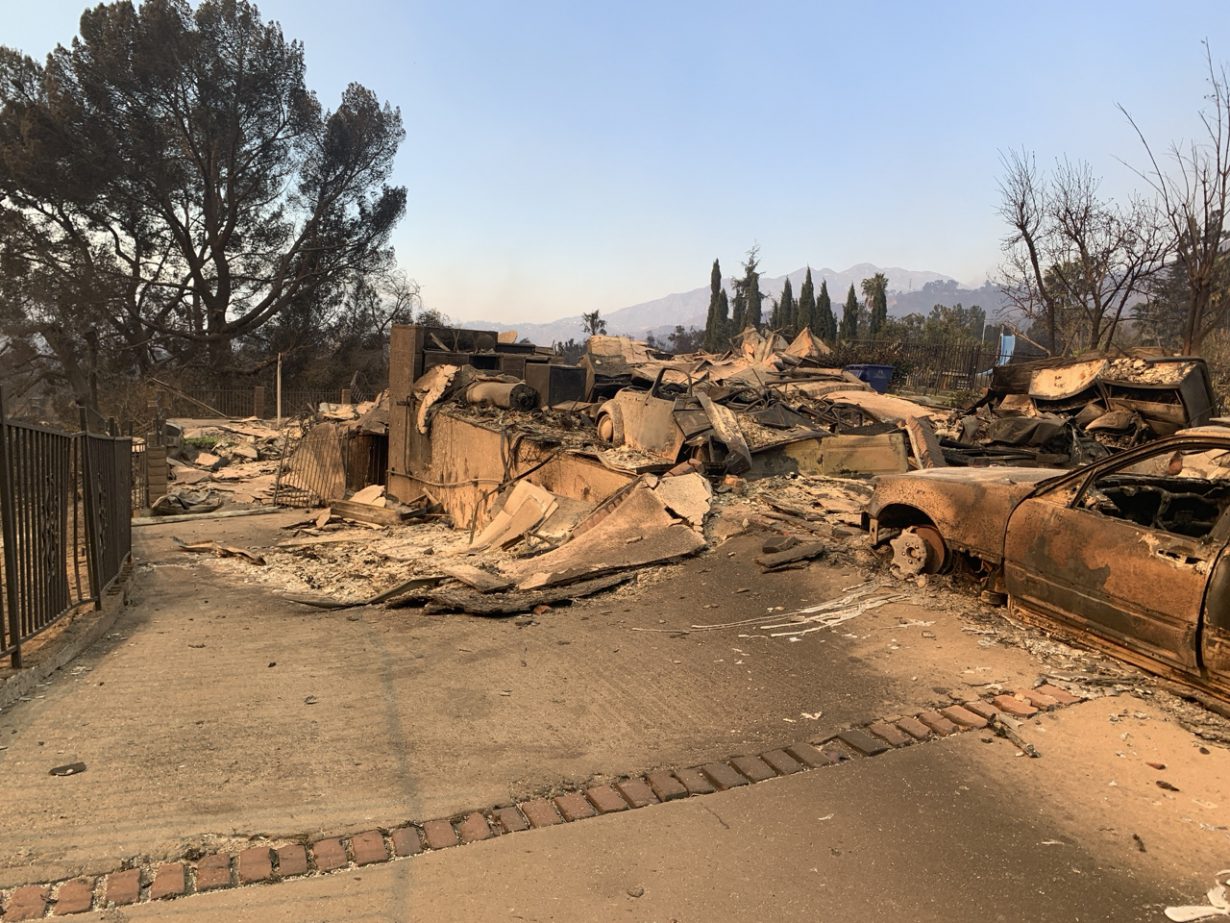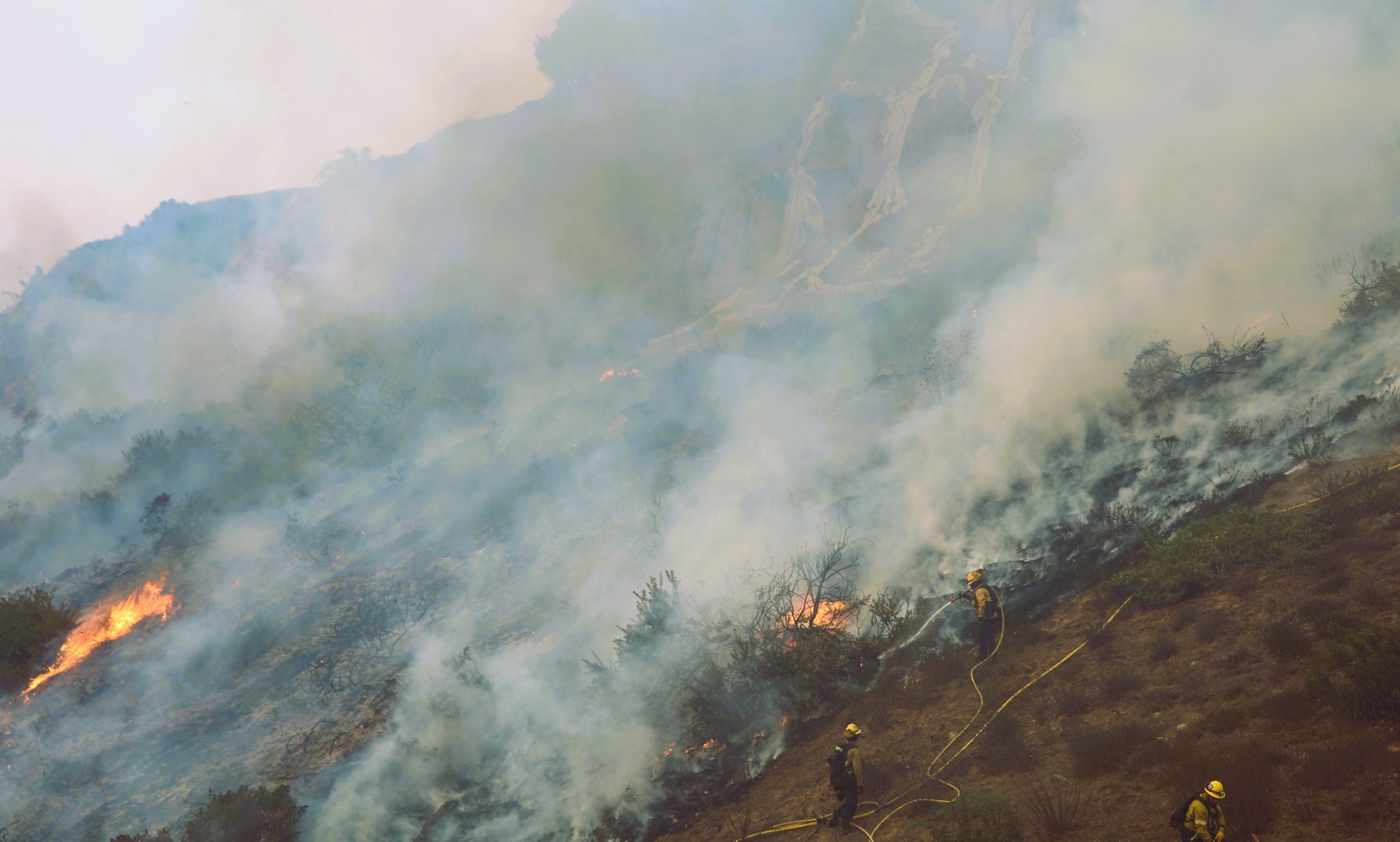The devastation of the Altadena and Palisades neighbourhoods this January revealed stark inequalities in the city
A single painting haunts Nathanael West’s 1939 novel The Day of the Locust, set in Hollywood during the Great Depression. A disillusioned film set designer, Tod, obsessively composes ‘The Burning of Los Angeles’, which depicts an apocalyptic end to the city; in it, all ‘the people who came to California to die: the cultists… the wave, funeral, airplane and preview watchers’ run from police while a fire burns Kahn’s Persian Palace theatre to the ground. By the end of the novel, Tod finds himself chased by a similar mob outside the same theatre, the spotlights of a premiere transformed into a hallucinatory vision of ‘fiery columns’ moving in ‘wide crazy sweeps’. In a Wildean fashion, LA’s reality mirrors and then overtakes Tod’s painterly representation. The story ends in chaos.
Whenever a new wildfire begins in Los Angeles, there is a cross-dissolve: overwrought, Hollywood-style representations of LA catastrophe overlap with one’s actual experience of it – then a new, devastating reality sets in. I felt a little like Tod when I drove from the Palisades, where I work, during the LA fires this January, as smoke began to billow from the mountains. Through my ash-clouded windshield, I saw a man waving a large palm tree frond. The leafy branch was on fire: tall, sharp flames grew from its stalk. A policeman chased him. I drove on, and homes and schools and churches continued to burn outside my view. When I left, LA’s future felt transparent, so faint I could put a hand through its projection. A thought: What if I kept driving? What if I left?

The question highlights a sentiment that has been brewing since long before January’s fires: living in LA feels increasingly unsustainable, and with the climate crisis comes greater risk – of fires, floods and more. ‘My parents chose to be here, but I didn’t,’ the journalist and author of After/Image: Los Angeles Outside the Frame (2018), Lynell George, told me. She lives in what LA County calls a ‘foothill community’, a high fire risk area between Pasadena and Altadena that was evacuated in Eaton’s blaze. When we spoke, she had just returned to her house, and described the surrounding neighbourhood as ‘completely decimated’. ‘The place that [my parents] chose to come to is not the place where I live now’, George said.
When George’s parents moved to LA in the mid-twentieth century, the city was still blossoming from waves of migration during LA’s ‘booster era’. Back then, real estate hopefuls had sold the area as the ‘Land of Eternal Spring’, according to Tom Zimmermann, author of Paradise Promoted: The Booster Campaign that Sold Los Angeles (2008) – and their mission was successful. The city’s inhabitants ballooned by roughly 3000 percent between 1890 and 1940, buoyed by migration from the American Midwest and South. My family followed a similar path, encouraged by popular stories of cheaper land, get-rich-quick schemes and year-round sunshine. Both sides of my father’s family emigrated, first from Russia and Ukraine, then to New York City, and finally to LA in the early twentieth century; when my mother was eight, she moved from Tucson, Arizona to LA’s West Side, where she attended Pacific Palisades High School, colloquially known as ‘Pali’. Pali burned down two weeks ago, as did my friends’ family’s houses in Altadena and the Palisades respectively, along with the hiking trails and restaurants and beaches I grew up with. The Palisades and Eaton fires destroyed not only these landmarks, but also the remnants of that advertised dream, however fictional it was from the outset.
These latest fires reveal just how inaccurate LA’s original mirage is now. ‘People talk about fire in Los Angeles like it’s an equal-opportunity destroyer,’ Rosecrans Baldwin, author of Everything Now: Lessons from the City-State of Los Angeles (2021) told me. ‘But [the Palisades and Altadena] are very different communities… There are a lot of people affected by this who don’t have the resources to withstand it’.

Indeed, the two neighbourhoods are a study in contrasts, revealing the ways historic biases and demographics remain relevant today. The Pacific Palisades was created as an exclusive Methodist community in 1922, and all residents purchased the coveted, pricey land directly from founder Reverend Charles Holmes Scott. Throughout the twentieth century, the beachy enclave attracted affluent newcomers; today, the Pacific Palisades is 82 percent white, and its median household earns nearly three times LA’s average – almost 200,000 USD, according to the 2023 census. Altadena, originally a tourist destination for wealthy East Coast Americans, became a haven for Black professionals in LA who were excluded from buying property elsewhere. In fact, a recent UCLA study found that the map of Eaton’s perimeter aligns closely with a 1939 redlining map of the same area: many of the burned neighbourhoods, home to the majority of Altadena’s Black residents, were labeled risky for bank lenders at the time. As a result, ‘Black households [in Altadena] are 1.3 times more likely to experience destruction or major damage’ than their non-Black counterparts – and 45 percent of Altadena’s Black homeowners report being cost-burdened, potentially rendering them unable to shoulder the strain of rebuilding.
LA’s fantasy of boundless wealth and land has long been outdated, but neighborhoods like Altadena that don’t conform to its shiny narrative still get less attention, which has a real impact on the strength of recovery efforts. Of the 23 opinion pieces The New York Times has published on the LA fires, at the time of writing, not one of them focused on Altadena exclusively. ‘For a lot of people’, Lynell George told me, ‘Learning about [Altadena’s] erasure was the first time they learned what Altadena was’. Some might never know at all: When newly reelected President Trump visited Los Angeles, he only toured the Palisades, avoiding Altadena altogether.

In The Day of the Locust, West sought to reveal his city’s darker underbelly, concluding his novel with a hallucination of fiery destruction, not its reality. This decision fits – or used to fit – a town where fiction often overwhelms actuality: for every real natural disaster that occurs in the city, it seems that there are even more scripts and books written about it. Now, though, it feels like this scale is shifting – and the old mentality has a cost. ‘The city we have is a fantasy, and we know it’, science reporter and New Yorker columnist Nicola Twilley told me. ‘That everyone can live in a single-family home, that we can control the rivers, and that we can live on a beautiful hillside surrounded by nature – it’s a fantasy. And like many fantasies, when it collides with reality, that’s when people get hurt’.
Books and movies end; LA doesn’t. What it will look like in the future is an open question. For the people most affected by the fires, the answer is simple, and it doesn’t include any Hollywood Hills pool parties or long drives up the cinematic Pacific Coast Highway. When I asked sculptor Kelly Akashi, who lost her home and studio to Eaton’s flames, what she wanted most, she replied easily. ‘Housing’, she said. ‘That’s all’.
